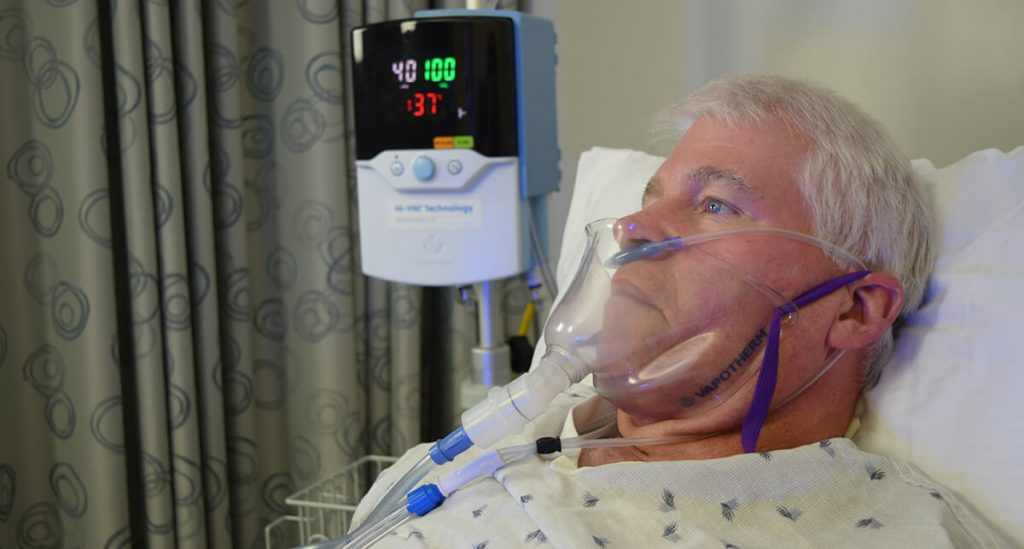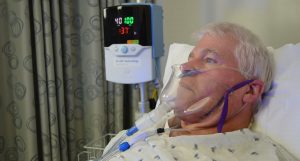FELIX-1: Creating a Localized Area of Negative Pressure for COVID-19 Patients

Even before COVID-19 became a truly global pandemic, it became clear that protecting healthcare workers (HCWs) from infection was crucial. Many major health organizations, like the Centers for Disease Control and Prevention (CDC), the World Health Organization (WHO), and the Society of Critical Care Medicine (SCCM) put out guidance to include the use of high flow oxygen for the management of respiratory distress. Like most methods of airway treatment, use of high flow oxygen devices presents an aerosol generating procedure (AGP). This is why all guidelines also urge proper transmission precaution measures be taken, such as PPE and use of negative pressure rooms, among others.
If you are familiar with Vapotherm, you may already know the computational fluid dynamics (CFD) modeling our team did to assess respiratory particle spread for patients on Vapotherm high velocity therapy — a form of advanced high flow nasal cannula. The CFD modeling showed that use of a simple face mask over the cannula interface greatly reduces the spread of potentially infectious particles during high velocity therapy. The amount of particles captured was comparable to the amount captured during normal breathing while wearing a mask.
We continued listening to our customers’ needs and concerns in hopes that we could offer further help. That was when Felix Khusid brought an idea to us. Khusid is an RRT out of New York, one of the epicenters of the pandemic in the US. He proposed a system to Vapotherm that paired a modified face-tent with hospital suction to create an area of negative pressure at the patient’s face. It was designed to help suction away potentially infectious particles and trap them in a suction canister. We thought it was a good idea that could help customers and thus, the FELIX-1 came about, named in honor of Khusid.

As shown in Figure 1, the FELIX-1 pairs a modified face-tent with tubing that is connected to a hospital’s suction system.
This concept of creating localized negative pressure has been executed in hospitals before. We conducted CFD modeling to determine its efficacy and found that for this particular simulation there was a comparable or better potential for particle capture when compared to a face mask. (see Table 1)
Table 1: Particle Capture During A Computer Simulation of Vapotherm High Velocity Therapy
| Configuration | Capture Efficiency (in these models) |
|---|---|
| Patient on high velocity therapy wearing face mask only | 88.8% |
| Patient on high velocity therapy wearing FELIX-1 | 97.1% |
Additionally, the simulation suggested that compared to a surgical face mask, the FELIX-1 had less heat retention around the patient’s face in this model. This could be more comfortable for patients.
But this is not where we want to stop with our commitment to helping our customers and their patients. During this unprecedented situation, we are witnessing clinicians going above and beyond to serve patients. As a thank you, Vapotherm is going to donate proceeds of the FELIX-1 to non-profit funds setup by the AARC, ACEP, and ENA to support frontline workers and their families.
Thank you for all you do. We will keep fighting together with you.